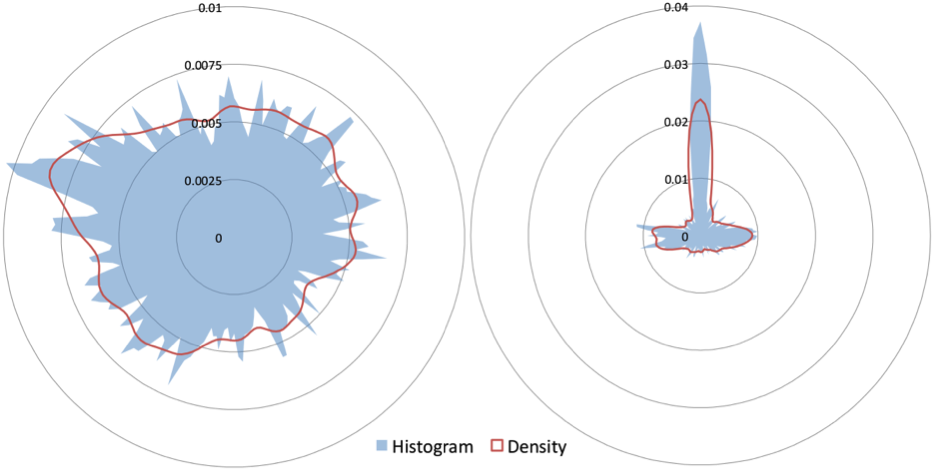Section: New Results
A quantitative approach for space-time membrane trafficking orientation
Participants : Thierry Pécot, Patrick Bouthemy, Charles Kervrann.
Rab6 proteins are trafficking from the Golgi apparatus at the cell center to Endoplasmic Reticulum or to plasma membrane located at the periphery of the cell. The cell shape influences Rab6 trafficking but no study has ever quantified the effect of the cell shape on the trafficking orientation. In this study [25] , we compare Rab6 trafficking orientation constrained by two different micropatterns [56] (circular and crossbow-shaped cells) from fluorescence video-microscopy. Object/background separation [13] is first applied to 3D+T image sequences to extract Rab6 spatio-temporal coordinates. The bandwidth of the von Mises kernel is automatically estimated using the rule of thumb and leads to two different densities for the two different micropatterns. We propose to quantitatively compare these densities by computing the Wilcoxon rank sum paired test between inter- and intra-micropattern distances. We considered the circular earth mover’s distance (also known as the Wasserstein metric) to compare traffic densities. Our quantitative study on micro-patterned cells concludes that the Rab6 transport carriers destinations concentrate at the three corner points of the crossbow-shaped cells corresponding to the main adhesion sites, while the vesicle destination distribution is somewhat uniform for circular-shaped cells.
Reference: [25]
Collaborators: Jean Salamero (UMR 144 CNRS-Institut Curie, STED team and PICT-IBiSA)
Jérôme Boulanger (UMR 144 CNRS-Institut Curie, STED team)



